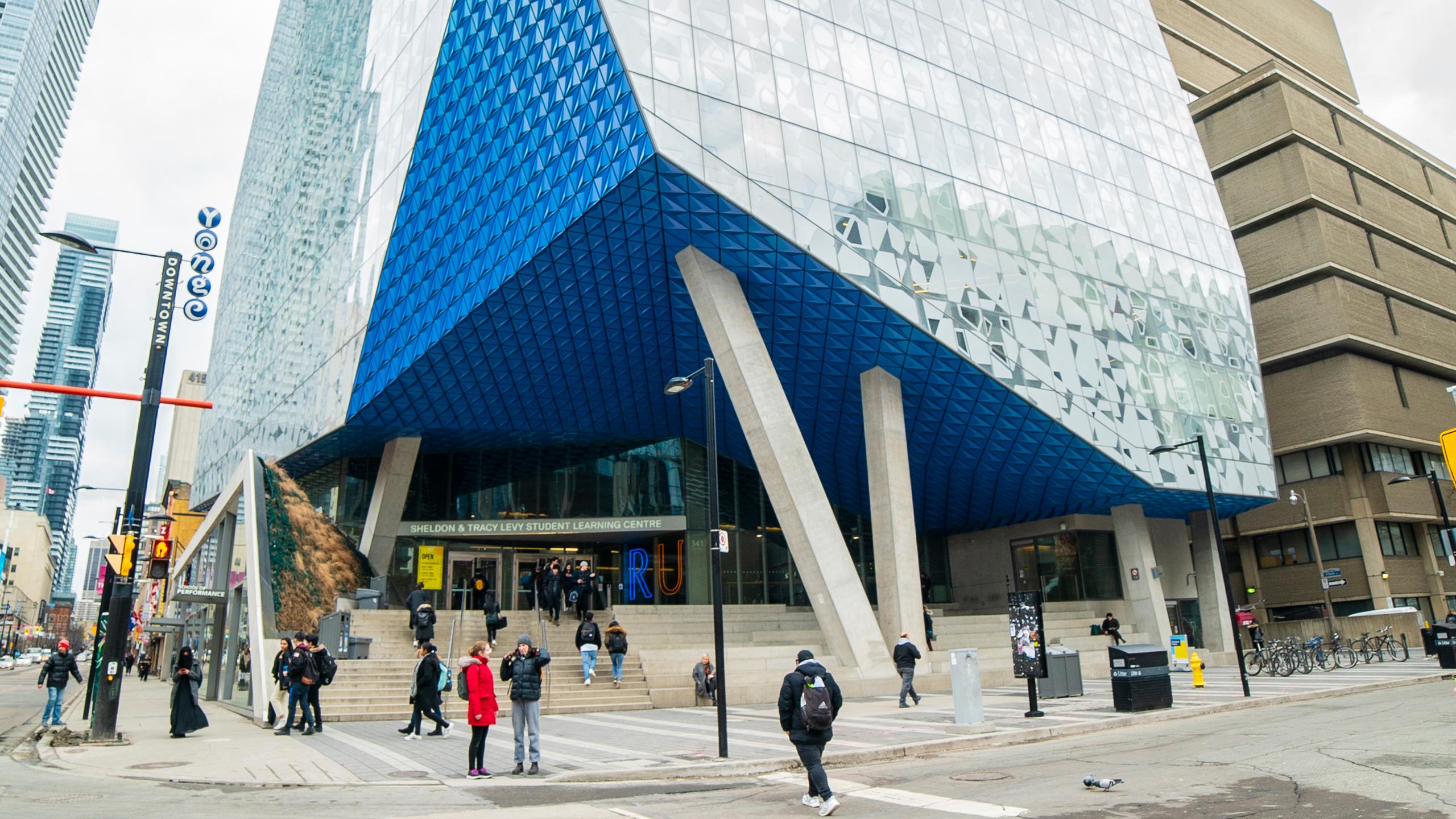By Yasmine Elkhouly
When the COVID-19 pandemic hit, students, faculty and staff were confined to the safety of their own homes.
In a matter of months, online learning and working-from-home have become the new norm while being on-campus is a rarity for most. But what about the people who aren’t staying at home?
In early September, the Student Learning Centre (SLC) reopened with new hours and regulations in light of COVID-19. Students have been allowed to stay in the SLC through Monday to Friday from 8 a.m. to 1 p.m. and 2 p.m. to 8 p.m. with an hour-long gap for cleaning.
When students want to study in the building, they have to make an online reservation, check-in with their student card on arrival, and wear a mask at all times, unless you have an underlying medication condition and are eating or drinking.
Kalee Kiluu-Ngila, a third-year psychology student, said she’s been going to the SLC about two to three times a week.
“The SLC staff are very strict with the policies of having to wear a mask at your desk and social distancing. If they catch you failing to abide by any of the rules you will have your booking privileges penalized or revoked completely,” said Kiluu-Ngila.
“It is weird because I’m so used to the rush when I come off the TTC. It’s unusually quiet in the SLC and it’s never been busy on any floor that I’ve booked.”
Kiluu-Ngila added that the benefit of an empty SLC has been the silence that is conducive to independent studies.
“If you’re the type of person who needs quiet then all SLC floors are now a great place for you. All floors have become the 7th floor,” said Kiluu-Ngila.
Likewise, third-year chemistry student, Carlos De La Rosa Martinez, emphasized how empty campus is right now. “It is basically reduced to just the SLC,” he said.
The other buildings currently open include the Ryerson Library and Mattamy Athletic Centre.
Martinez added that staff at the SLC are kind when enforcing the strict rules and consistent. “They do a good job so no complaints there,” he said.
According to a statement from the university, the majority of students, faculty and staff have been learning, teaching and working remotely during the COVID-19 pandemic, however, the campus is not empty.
In addition to the SLC reopening, there continues to be activity on campus as buildings are in need of upkeep.
Recently, critical scholarly research and creative activity have been approved to resume. Both students and staff are required to follow strict procedures in order to maintain health and safety.
This includes all forms of research-related activities, such as graduate research and experimental studies conducted at Ryerson University, that were forced into a hiatus at the start of the pandemic.
Now, students can continue to learn through research and any potential issues such as data loss due to the break can be addressed by returning to data collection and allowing research participants back to the labs.
Facility workers adapt to ‘evolving’ health policies
Many students are grateful to finally have access to a workspace on campus again. But how is campus being maintained as students are allowed back?
Custodial and grounds team at Ryerson, including the food services team, are among staff still showing up almost every day to campus to keep things running.
According to Ryerson’s facilities team, the biggest challenge for the staff is constantly having to adapt as health policies evolve.
Groundskeepers and maintenance and operations teams have continued with their usual routine and responsibilities. Caretaking staff have been performing extra cleaning on all high-touch areas, ensuring sanitizers are stocked and that all areas of the campus are covered.
Garth Poppleton, a manager of the custodial and groundskeeping services, said his team has been working to maintain the campus during this tough time.
“I’m very proud to work with them. They’re a hardworking, dedicated team,” he said.
Tanya Vlaskalin, who works on Ryerson’s environment health and safety team, said they have been charging ahead with their regular duties throughout the pandemic, with just some slight tweaks. This team takes care of the physical environment of the campus.
“Public health authorities might give certain advice on one day, but then two or three days later, there’s a change. Monitoring has been crucial,” she said.
Facilities Management and Development workers, who are considered essential workers, have been applauded by the university in a statement for “exceptional dedication to the campus community to ensure the safe, ongoing operation of the university.”
‘I miss my graduate students a lot’
Brian Koivisto, an associate professor in the chemistry and biology department, said that his commute is not as bad as usual but for him, the days have become much longer on campus.
He works six days a week, each day starting at 8 a.m. and sometimes working up until 10 p.m. Koivisto said this is partly due to the fact that his class size is over 100 students more since so many students have opted to take extra courses whilst being locked up at home.
“Now, you expel so much more effort and you just have no feedback mechanism from the student,” said Koivisto. “I wonder if I am making a positive difference at all. It can be exhausting.”
Sometimes Koivisto reminisces on the times when a simple “hello” could be spoken between peers or faculty passing one another in a hallway.
He also said he believes many students and faculty have suffered from a lack of regular school interaction. During this all, his research program on organic renewable energy has been quite different in its delivery due to social distancing.
“I don’t get to see my graduate students as much in person, and they have irregular schedules,” said Koivisto. “There is less of a sense of community. I miss my graduate students a lot.”











Leave a Reply